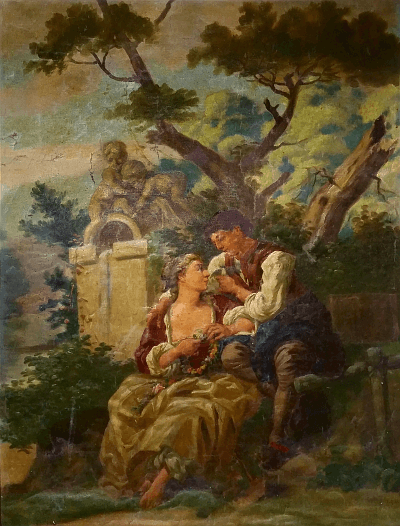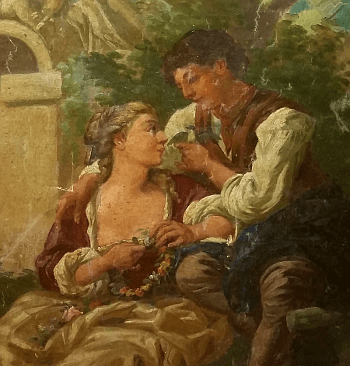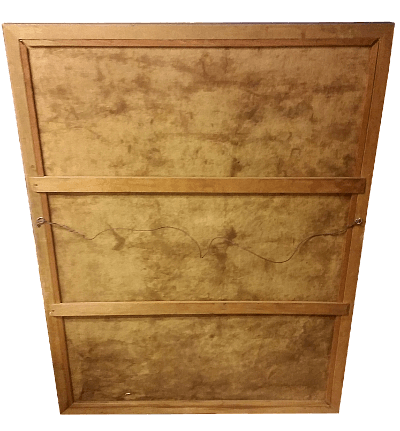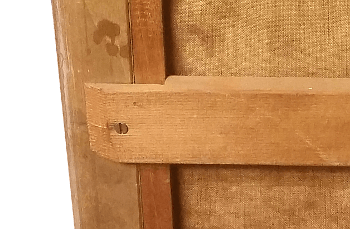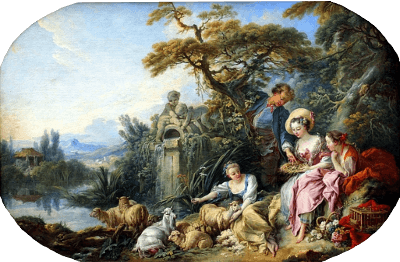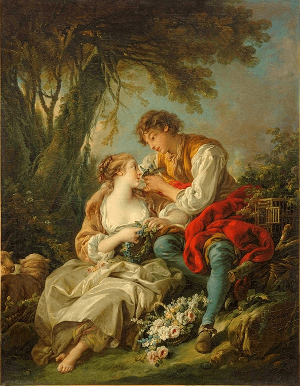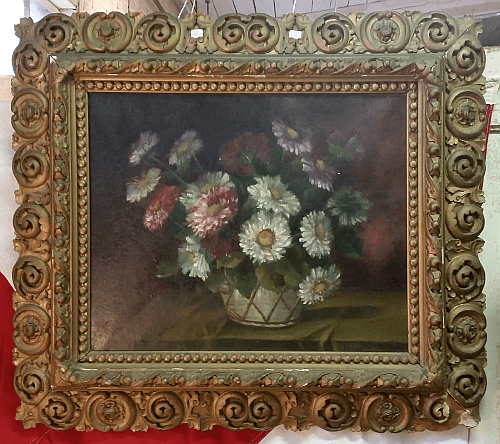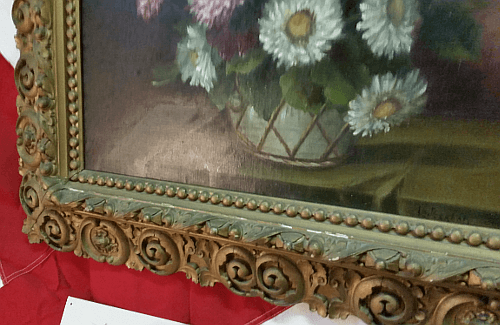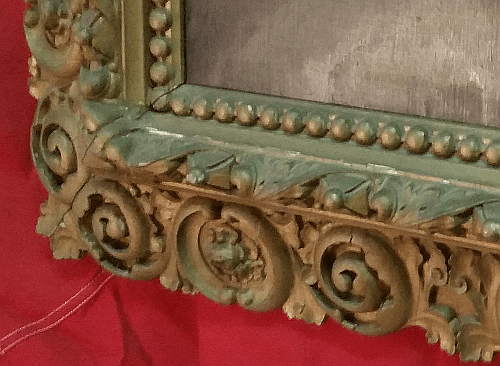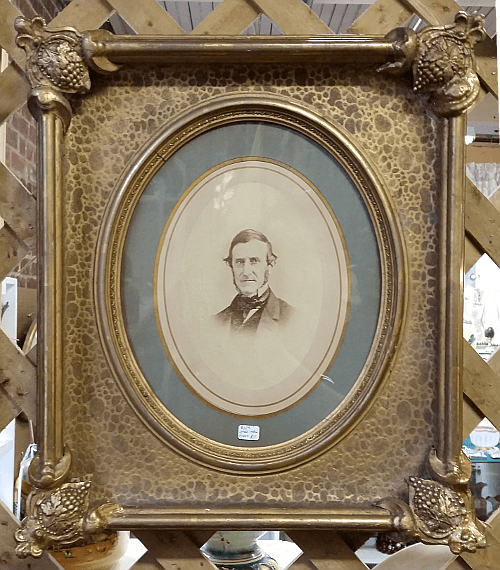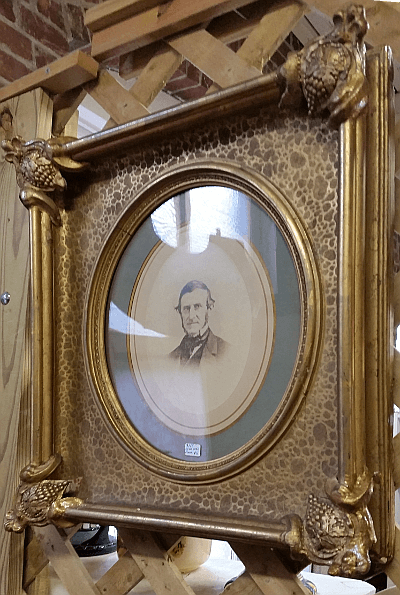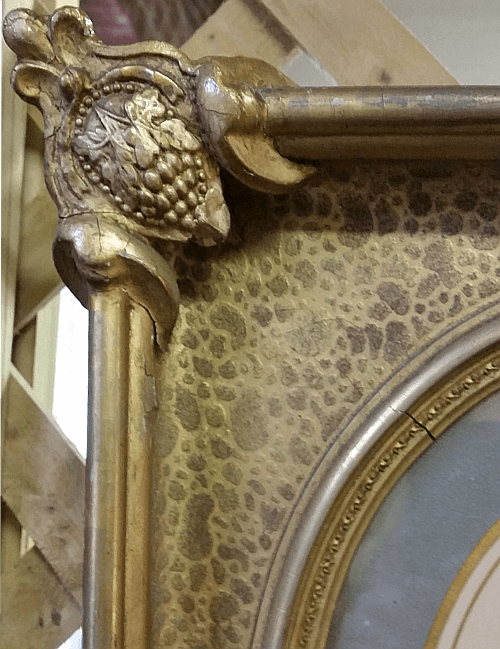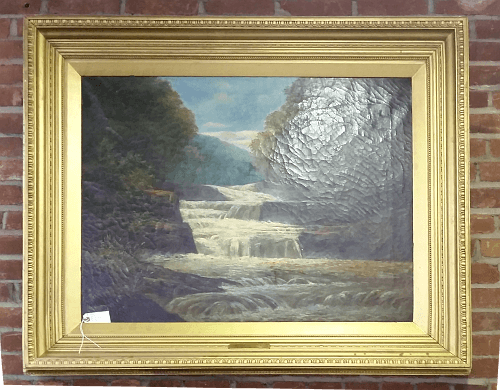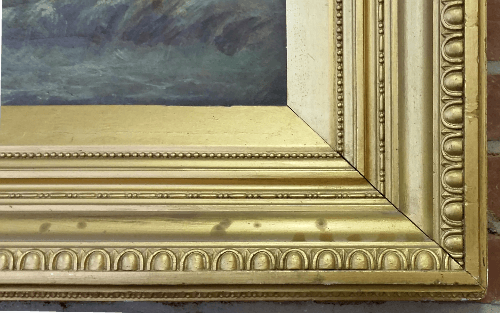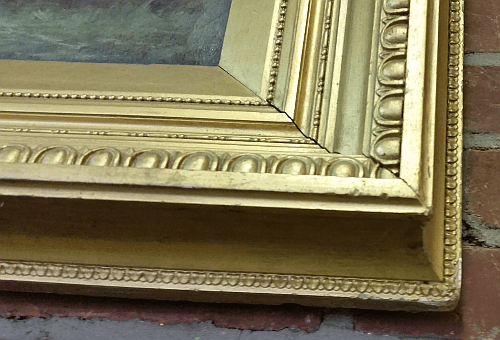Purchased by my mother for about $15.00 at a local thrift shop, this sizeable Rococo reproduction painting was an excellent find. She asked me to frame it for her, prompting me to dig into the picture’s origins.
Rococo Reproduction Painting
The painting has no artist’s signature, and there are no identifiable markings on the stretcher or back. It is old, and there are visible signs of wear on the canvas and painted surface. There is a lot of dirt buildup and yellowing of the varnish. The canvas is very dry and brittle. There is cracking of the painted medium in certain areas, and the painting could use a restoration.
Narrow strips of wood and two fitted cross-members hold painted canvas in place. The frame is not outstanding in any way and is probably not original to the painting.
The Composition
The composition of this painting is derived from elements of two famous paintings by Rococo artist Francois Boucher. (1703-1770) During a general search of the 17th through 19th-century painting styles, I stumbled upon a painting by Boucher, The Bird Cage (1763), that partially matched the reproduction painting. Further research into Boucher’s works led me to a second painting, The Shepherd’s Gift (1740), that matched another portion of the reproduction painting. You can imagine my excitement.
Reference Painting 1:
The Shepherd’s Gift (The Nest) draws from the fountain, large tree, and foliage to the left of the water fountain.
Reference Painting 2:
The Bird Cage draws from the man and woman. The artist might have referenced black-and-white images of the original paintings and thus the variation in clothing colors on the reproduction, but that’s just a guess.
In conclusion, researching this Rococo reproduction painting was a fun project.

